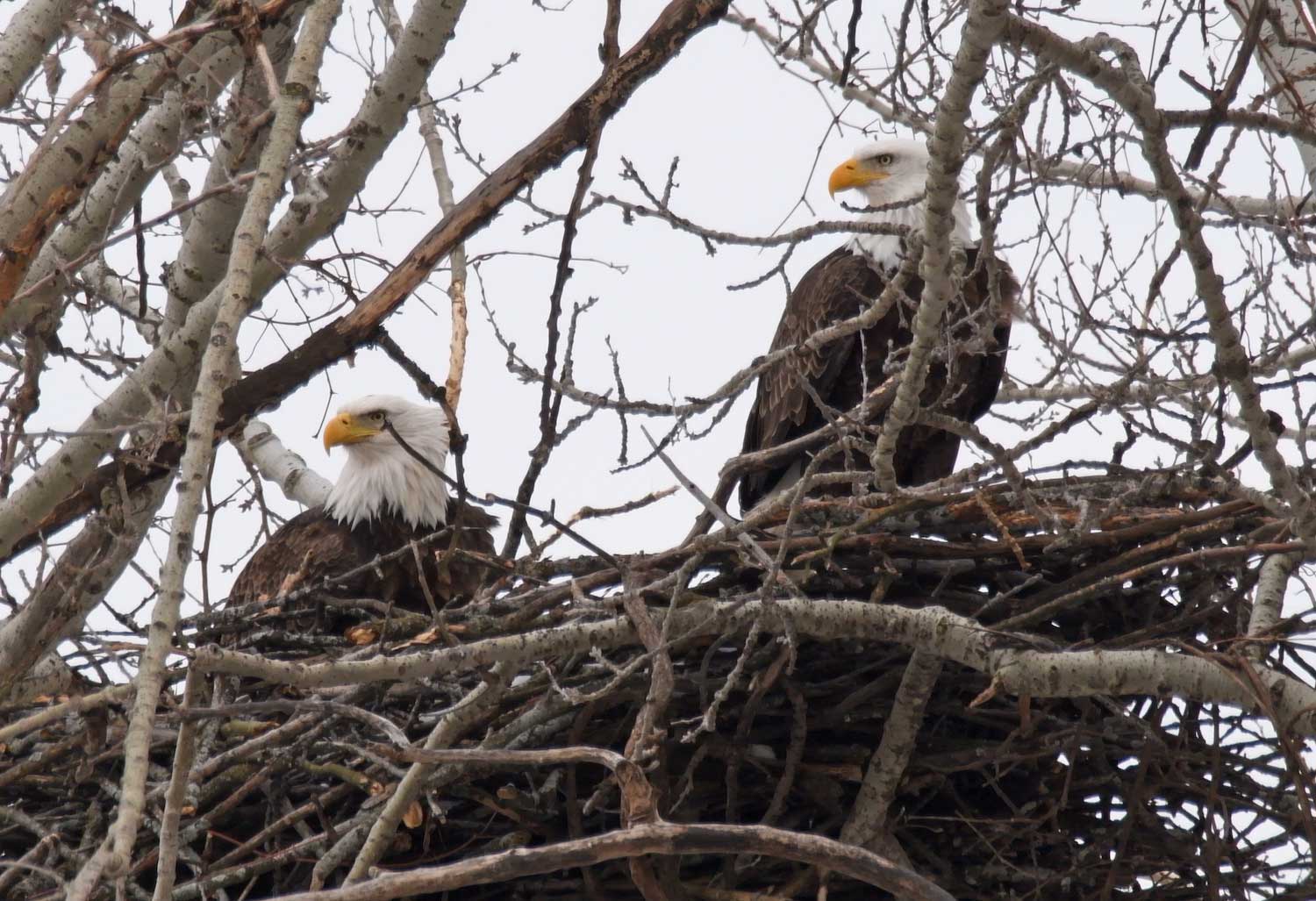Nature curiosity: Why do eagles lay their eggs in winter?

Every season has its challenges, but winter seems especially difficult. The hardships winter presents — cold temperatures and lack of food to name just two — are the reason some animals hibernate or brumate. For those creatures, it's better to hunker down and sleep the winter away than risk succumbing to the harsh conditions.
Of course, not all animals skip winter altogether. Many birds and mammals remain active, particularly on warm and sunny winter days. For some animals, winter is even a critical part of the year. Take, for example, bald eagles. For them, winter is the start of nesting season.
Eagles start preparing for nesting season even before winter officially begins. Between one and three months before laying eggs, the pair will begin working on their nests, Journey North reports. In northern Illinois, this typically begins in November or December. Eagles reuse their nests from year to year but still do work on them each year, adding new material to freshen them up. Both the male and female work to construct or maintain the nest.
By late February, it's time to lay the eggs. The timing might seem less than ideal given the average daily temperatures in Will County in February. This timeline does have its advantages, however. From the time eggs are laid until the time eagles are ready to fledge the nest is about four months, CBS News reports. That means eagles are learning how to fly and hunt sometime between May and June, a time when their main food source — fish — is plentiful and easy to find.
Laying eggs in winter is also practical because it is easier for the adult eagles to keep the eggs warm in winter than it is to keep them cool in the summer, according to CBS News. It also explains why eagles do not follow the same nesting timeline everywhere. Here in the Upper Midwest, laying eggs in winter is common, but in the southern United States, breeding pairs of eagles begin the nesting process in the fall. This allows the eaglets to reach fledgling age before it gets too warm again in the spring.
The variation in when bald eagles nest based on geography also creates a disparity in the size of our national bird based on where they live. Bald eagles in the Upper Midwest are larger than eagles in the southern United States because their larger size makes them more efficient at conserving heat and, therefore, better helps them incubate their eggs, CBS News reports.
A breeding female will lay between one and three eggs in each clutch, although she does not lay all the eggs at once, according to Journey North. It generally takes between three and six days to lay a full clutch of eggs.
Once the eggs are laid, they are incubated for about 35 days before hatching, Journey North reports. Both the male and female will sit on the eggs, although the female eagle is the primary incubator. The pair will trade places several times through the day, usually every one to four hours. To incubate the eggs, both the male and female will create a brood patch on their breast by removing feathers. The bare skin of the brood patch is what incubates the eggs because it allows the heat to more effectively warm them.
The eggs must be kept at a temperature of about 105 degrees Fahrenheit, but that's not the only purpose of the eagles sitting on the eggs, according to Journey North. It also protects the eggs from predators and even extreme sunlight, which might make the eggs too hot. The eggs must also be turned regularly — about once every hour or two — so they are warmed evenly and the embryos don't start to stick to the inside of the shell. Turning the eggs has to be done carefully so their sharp talons do not punch holes in the delicate shells.
Bald eagles aren't the only birds that lay their eggs in winter. Nesting in late winter or early spring is common for many owl species. Great horned owls typically lay their eggs in February or March, the Owl Research Institute reports. Eastern screech owls follow the same schedule, and barred owls typically lay their eggs in March.
